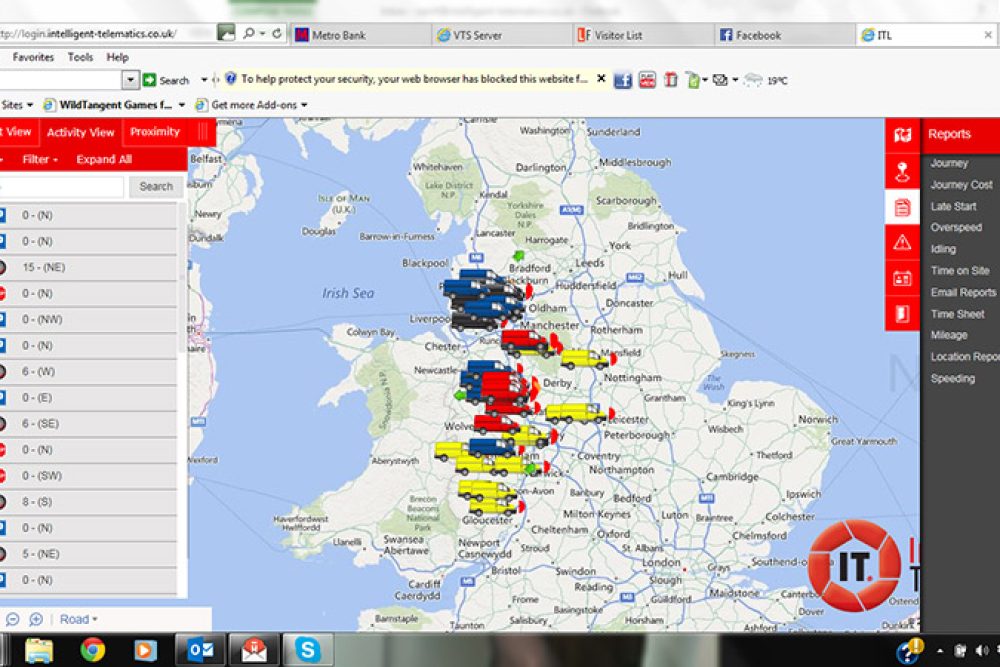GONE are the days of static, two-dimensional data with basic functionality. Today, byte-generated intelligence is powering increasingly sophisticated software, giving fleet managers access to a wealth of insight into their fleets’ status.
This is leading to smarter decision-making and more strategic thinking within the fleet management team, which, in turn, is driving greater efficiencies and cost savings.
Access to better data, and the ability to integrate this into management processes, also supports safety, sustainability and compliance across a company’s fleet – meaning that for many businesses quality fleet software is now a ‘must have’ rather than a ‘nice to have’.
Chris Black, commercial director at LeasePlan UK, explores the different ways companies are integrating data-powered software into their fleet management processes, and outlines his predictions of how this will evolve in the coming years:
Driver and vehicle behavior analysis
Good fleet software can be used to help identify any notable drivers and vehicles, giving fleet managers a far more comprehensive overview of their fleet.
For example, telematics systems allow managers to determine whether drivers are breaking or accelerating too harshly or idling for excessive periods of time. This insight enables them to identify any bad habits or risky behavior, and act accordingly.
By giving fleet managers a tool to optimise driver behavior and encourage best practice, businesses can significantly reduce fuel costs and improve safety across their fleets – meaning fewer accidents and a healthier bottom line.
Access to better data also allows for greater sustainability across a company’s fleet, as managers are able to keep a tighter grip on vehicle emissions.
Key to reducing carbon emissions is, of course, reducing fuel consumption – however, this shouldn’t just mean driving less.
Driver analysis, supported by telematics, can significantly improve fuel consumption by streamlining and simplifying fleet management processes, resulting in smarter driving and a lower carbon footprint.
For companies considering introducing electric vehicles into their fleet, fleet software can offer vital insight into a number of areas to support informed decision making. For example, the data provided by telematics on driver behaviour can help fleet managers ensure that each employee is matched with the right vehicle type.
At the same time, telematics can be used for EV drivers to optimise their travel, by providing information on charging stations and the best routes.
Vehicle maintenance
Unplanned vehicle downtime can be incredibly costly for business – both in monetary and reputational terms. When Autoglass surveyed 250 fleet managers in 2013, the average estimate for the business cost of having a van off the road was £727 a day – although the actual cost can be as much as £1000.
According to data published last year by fleet software provider Verizon Connect, SME vehicle off-road costs, including driver downtime and days lost to accidents, amounted to an average of £6,000 a year.
Data-driven insights can help to decrease downtime by allowing for the implementation of proactive servicing.
Defects that have the potential to cause significant problems are identified at an earlier stage, often instantaneously, reducing the likelihood of them becoming bigger problems and causing vehicles to be off the road for longer.
One example of this is LeasePlan’s UPtime Live, an app that enables proactive fleet management through telematics such as fault code analysis. UPtime Live manages all scheduled events, while simultaneously providing up-to-the-minute status checks on every vehicle, alerting managers in real time to any possible issues.
It also signals when an affected vehicle is near an approved maintenance workshop, so that vehicle downtime can be minimised.
At the same time, telematics can provide fleet managers with vital compliance data, which is needed to minimise risk and remain compliant with driver log auditing, fuel tax reporting, temporary trip permits and more.
This supports safety across the business and frees up time for fleet managers to concentrate on other tasks.
What’s next?
Software is only going to become more intelligent in the future. In the next few years, we can expect to see fully integrated systems that provide enhanced forecasts of how a driver or a fleet will behave – similar to risk profiling but more intelligent.
This will soon become a pillar of safety, sustainability and compliance across the entire automotive industry.
However, fleet providers and managers will need to work closely with manufacturers to create a truly realistic profile of the vehicle and how it is being driven.
Close collaboration between all three parties is vital – but once achieved, we’re going to see a shift away from traditional vehicle management systems to enhanced mobility solutions.
These will optimise how the vehicle can be used, make it simpler to operate, and accommodate individual demands.







